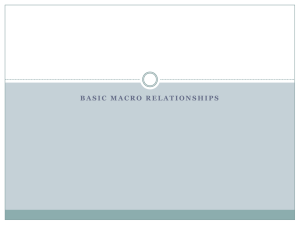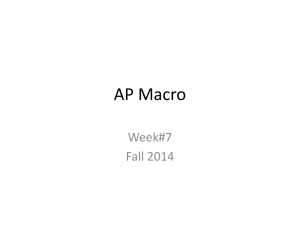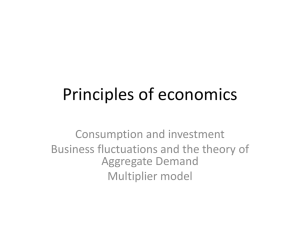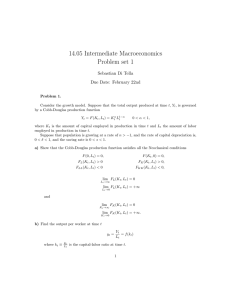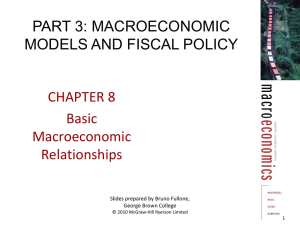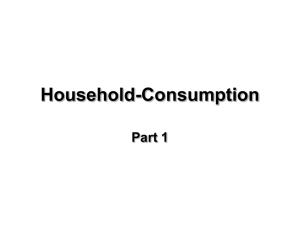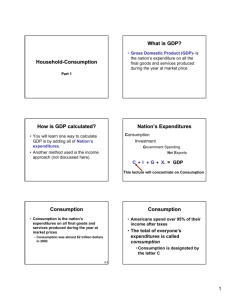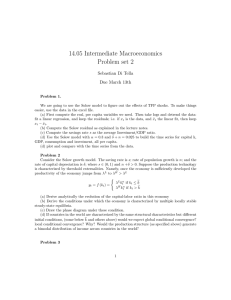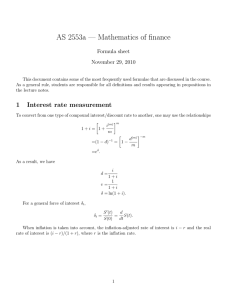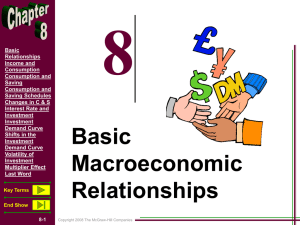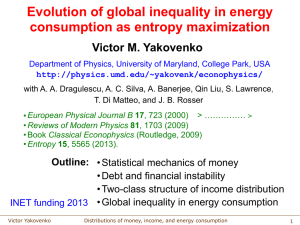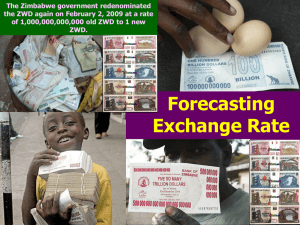AP ECON CH 9
advertisement
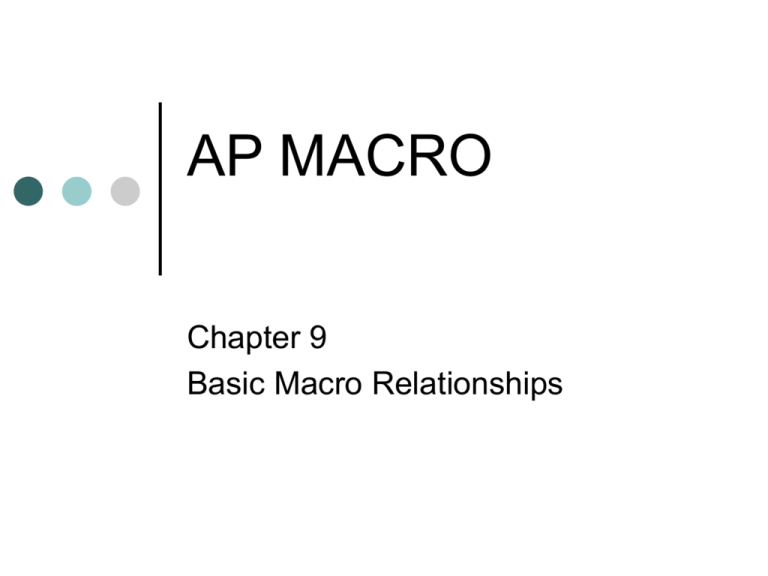
AP MACRO Chapter 9 Basic Macro Relationships Personal Savings=DIConsumption Factors that Determine Savings DI As DI declines---S declines 45 degree reference line C=DI Savings=amount by which actual C falls short of 45 degree line CONSUMPTION AND SAVING Consumption SAVING C Consumption schedule C DISSAVING o 45 MPC = Slope of C o MPC + MPS = 1 Saving Disposable Income DISSAVING Saving schedule MPS = Slope of S S SAVING o S Disposable Income PROPENSITIES APC + APS=1 Consumption/DI Savings/DI MPC + MPS=1 Change in C/Change in DI Change in S/change in DI Non-Income Determinants of C&S 1-wealth Real assets vs. financial assets Usually—if wealth increases-----C moves up; S down 2-expectations Expect recession--- Expect prices to rise tomorrow--- 3-real interest rates If you borrow more---Consume more—save less At low interest rates—less incentive 4-household debt As % of DI Held constant when drawing C schedule If consumers increase debt---increase C more at each level 5-taxes Shift both C and S TERMINOLOGY, SHIFTS, & STABILITY Consumption C1 C0 Increases in Consumption Means… o 45 o Saving Disposable Income A Decrease S0 S1 In Saving o Disposable Income Consumption TERMINOLOGY, SHIFTS, & STABILITY C0 C2 Decreases in Consumption Means… o 45 o Saving Disposable Income S2 An Increase S0 In Saving o Disposable Income Terminology Change in amount consumed---move pt. to pt Caused by a change in GDP or income Change in determinant Redraw the entire graph Interest rate investment relationship Business—plants/inventory MC=interest rate paid for borrowing Vs. MB=expected rate of return on investment 1st key determinant of Investment Spending 1-expected rate of return=profit Profit/cost Example: Spend $10,000 Make $12,000 net revenue • Profit=2,000 • 2,000/10,000=20% rate of return • Rate of return=r 2nd determinant Real rate of interest (i) Financial cost of borrowing Example: If interest rate is 7% on $10,000 • • • • $700 interest cost Compare to expected rate of return $2,000-700=$1300 profit r>i up to the point that r=i Key concerns What if the company is NOT borrowing? Opportunity cost Real interest rate not nominal Interest Rate – Investment Relationship and interest rate, i (percents) Expected rate of return, r, 16 14 INVESTMENT DEMAND CURVE 12 10 8 6 4 2 ID 0 5 10 15 20 25 30 35 40 Investment (billions of dollars) What makes Investment Demand Shift? 1-acquisition, maintenance & operating costs 2-business taxes 3-technological change 4-stock of capital goods in hand 5-expectations Investment-most volatile part of GDP 1-durability 2-irregularity of innovation 3-variability of profits 4-variability of expectations
